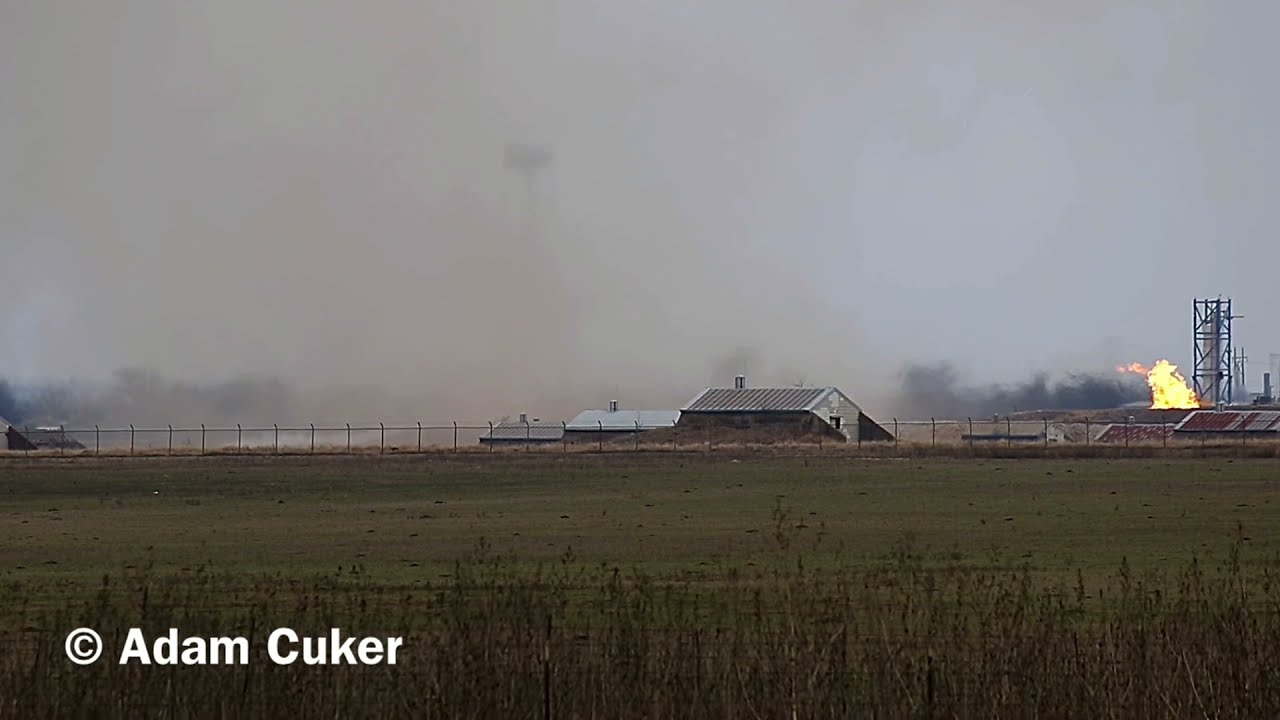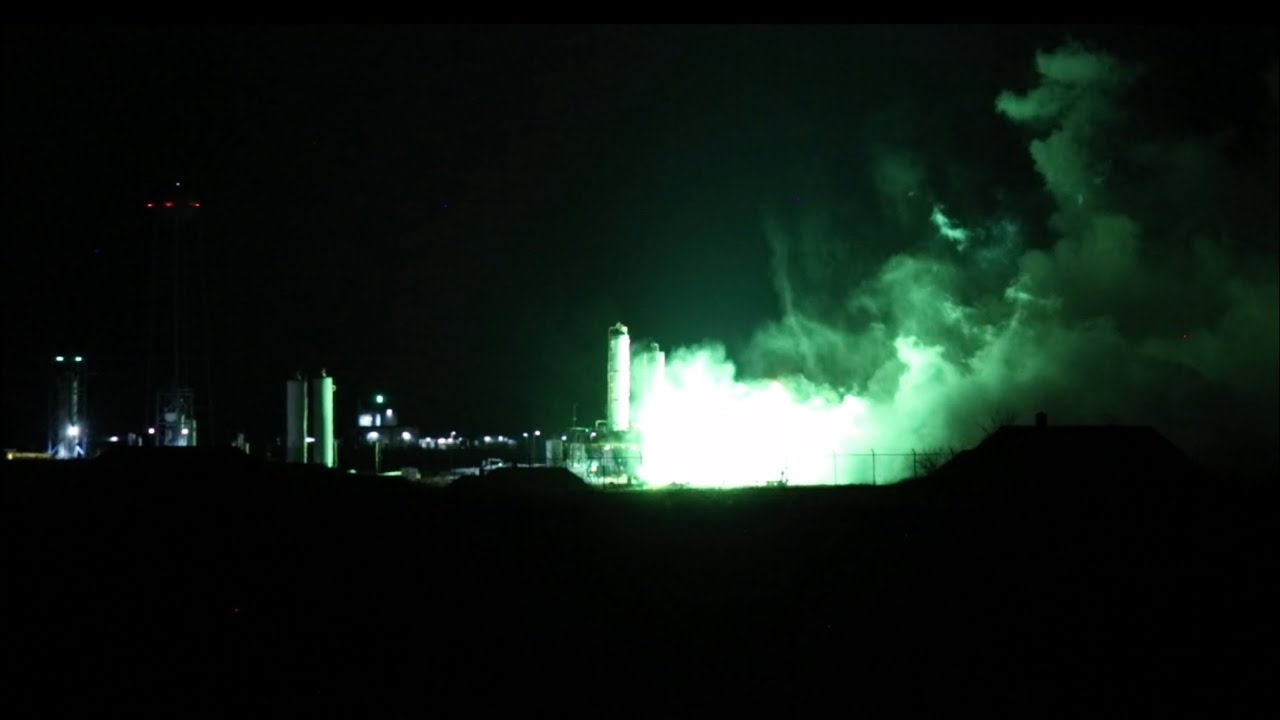This is video of a test firing of a SpaceX Raptor 2 engine, designed for use on the Starship, conducted at SpaceX’s engine development and test site at McGregor, Texas. The engine was fired on a horizontal test stand with the exhaust plume from right to left. The audio has been re-synchronised with the video to avoid speed of sound delays. Note that the methane/oxygen propellants burn with an almost transparent plume due to the low carbon content of the methane fuel (CH₄). The bright flame at the end of the test is due to methane vented during the fuel-rich shutdown burning inefficiently in the ambient air.
Serious question – Is the transparency due to the low carbon content of methane or due to the highly efficient combustion when burning with pure oxygen in a well-designed engine? After all, both CO2 and water vapor (H2O) are transparent gases at normal temperatures – not sure about at the very high temperatures in the rocket plume.
As an aside, we have to note that water vapor (H2O) is a much more potent “greenhouse gas” (to use that unscientific misnomer) than CO2. Something to think about when we look at the con trail from a jet passing overhead, carrying the “scientists” to their next Global Warming conference in some far-off location.
Virtually all rocket engines burning hydrocarbon fuel and liquid oxygen run fuel-rich (more fuel than oxidiser compared the stoichiometric ratio for the combustion reaction). This reduces combustion chamber temperature and nozzle cooling requirements, avoids an oxygen-rich exhaust which erodes metal like a cutting torch, and actually improves nozzle efficiency. With carbon-rich fuels such as kerosene, unburned hydrocarbons in the exhaust burn with atmospheric oxygen, generating the bright plume. (If you watch the rocket camera images of a Falcon 9 launch, you can see that the bright plume goes away as the rocket climbs out of the oxygen-rich atmosphere.) The Raptor engine runs with a 3.6 mixture ratio (78% LOX, 22% methane) which is conventionally fuel-rich.
Methane has only one carbon to four hydrogen atoms, so there just isn’t enough carbon to burn and glow brightly, hence the almost transparent plume. The chemistry of rocket plumes is messy and complicated: here are “Exhaust Plume Calculations for SpaceX Raptor Booster Engine” [PDF] prepared by Sierra Engineering & Software for SpaceX to submit as part of the environmental assessment of Starship operations.
Thanks for that explanation, Mr. W. The chemistry of rocket combustion certainly is complex! The document you referenced (Thanks!) sets out around 40 reactions taking place in the combustion chamber! So much for my simple expectation of a single stoichiometric reaction – CH4 + 2O2 → CO2 + 2H2O.
Also interesting that the calculated Thrust Chamber Nozzle Exit Species (Table 3) shows almost complete combustion of the methane, with only a trivial amount remaining unburned. Presumably, after nozzle exit, carbon monoxide in the exhaust stream reacts with the remaining oxygen as well as with ambient air. To pump such large volumes of fuel and oxidizer through a fairly small combustion chamber and achieve the energy release from near-total combustion efficiency is quite an achievement! SpacEx is doing a great job!
Here is a Raptor 2 test from 2022-01-14 that ended badly. This was a firing in a vertical test stand that apparently resulted in an oxidiser-rich shutdown that caused the copper-lined combustion chamber and nozzle throat to begin to burn, generating the characteristic green colour that rocket engineers ironically call “engine-rich combustion”. The flame to the right of the test stand is a flare stack which burns excess methane vented from the tankage and is unrelated to the rocket engine.
Amazingly, the same engine was apparently fired for a momentary test some time thereafter.

